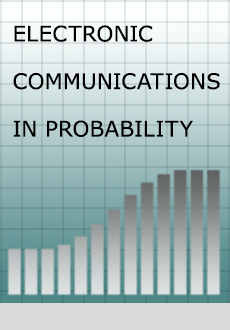Abstract
There exist a number of results proving that for certain classes of interacting particle systems in population genetics, mutual invadability of types implies coexistence. In this paper we prove a sort of converse statement for a class of one-dimensional cancellative systems that are used to model balancing selection. We say that a model exhibits strong interface tightness if started from a configuration where to the left of the origin all sites are of one type and to the right of the origin all sites are of the other type, the configuration as seen from the interface has an invariant law in which the number of sites where both types meet has finite expectation. We prove that this implies noncoexistence, i.e., all invariant laws of the process are concentrated on the constant configurations. The proof is based on special relations between dual and interface models that hold for a large class of one-dimensional cancellative systems and that are proved here for the first time.
Citation
Jan Swart. "Noninvadability implies noncoexistence for a class of cancellative systems." Electron. Commun. Probab. 18 1 - 12, 2013. https://doi.org/10.1214/ECP.v18-2471
Information





